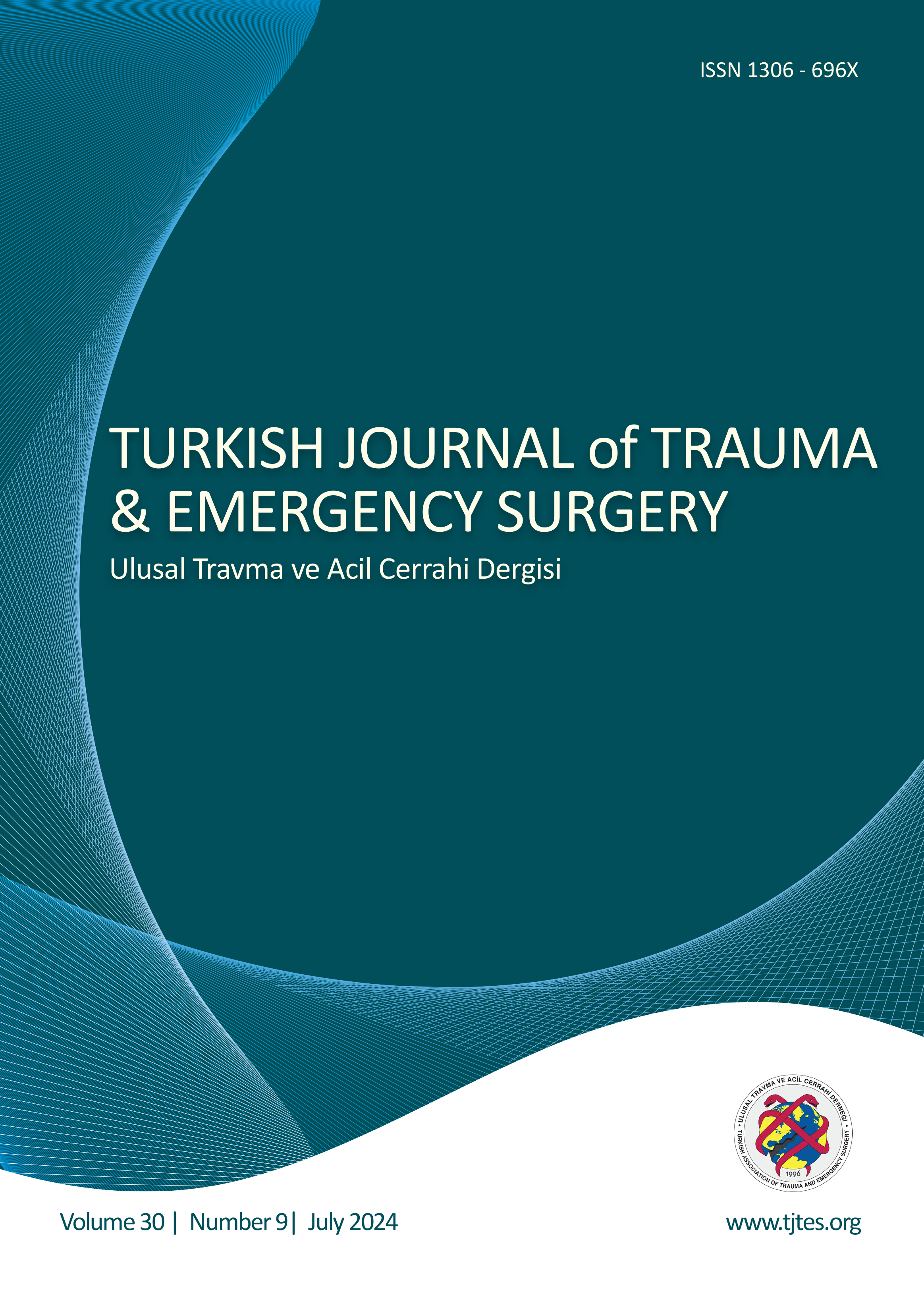Quick Search
Traumatic multiple-level continuous and noncontinuous thoracolumbar spinal fractures management in adult patients: A single-center experience
Çağlar Türk1, Nail Ozdemir21Department of Neurosurgery, Izmir City Hospital, Izmir-Türkiye2Department of Neurosurgery, Faculty of Medicine, 9 Eylul University, Izmir-Türkiye
BACKGROUND: This study aimed to describe our clinical experience with surgical approaches and patient management for traumatic multiple-level continuous and noncontinuous thoracolumbar spinal fractures.
METHODS: We retrospectively evaluated patients with continuous and noncontinuous multiple-level thoracolumbar fractures who were operated on by the same surgical team from 2019 to 2021. These patients were divided into two groups: Group 1 (n=12, continuous fractures) and Group 2 (n=14, noncontinuous fractures). We assessed the patients age, gender, fracture levels, fracture type, classification according to the AO (Arbeitsgemeinschaft für Osteosynthesefragen) Spine Thoracolumbar Fracture Classification, status of posterior ligament damage, presence of additional traumatic pathology, status of decompression via laminectomy, levels of stabilization and fusion, preoperative and postoperative neurological status, presence of cervical trauma, duration of operation, amount of blood loss, duration of hospitalization, and lordosis and kyphosis angles in terms of fusion status and postoperative follow-up over two years. The study excluded patients over the age of 65, those with single-level fractures, and pathological fractures caused by osteoporosis, infection, or spinal tumors.
RESULTS: Gender, age, neurological status, application of laminectomy, surgical complications, status of cervical fracture, duration of operation, amount of blood loss, duration of hospitalization, lordosis, and kyphosis angles were uniformly distributed between the groups. All patients underwent fusions, ranging from three to eight, with a median of two (range 2-4) fracture levels, and a median of five instrumented vertebrae, ranging from four to seven. Significant differences between the two groups were observed in terms of operation duration (p=0.001), blood loss (p=0.010), duration of hospitalization (p=0.003), number of fusions (p<0.001), and instrumented vertebral segments (p=0.011).
CONCLUSION: Thus, a surgical approach involving decompression, vertebral fusion screws, allografts, and bone substitutes can enhance surgical outcomes for patients with continuous and noncontinuous vertebral fractures.
Keywords: Continuous fracture, laminectomy; neurological status; noncontinuous fracture; spinal fusion; thoracolumbar fractures.
Yetişkin hastalarda travmatik çok seviyeli ardışık ve ardışık olmayan torakolomber spinal kırıkların yönetimi: Tek merkez deneyimi
Çağlar Türk1, Nail Ozdemir21İzmir Şehir Hastanesi, Beyin ve Sinir Cerrahisi Kliniği, İzmir, Türkiye2Dokuz Eylül Üniversitesi Tıp Fakültesi, Beyin ve Sinir Cerrahisi Anabilim Dalı, İzmir, Türkiye
AMAÇ: Bu çalışmanın amacı travmatik çok seviyeli ardışık ve ardışık olmayan torakolomber omurga kırıklarında cerrahi yaklaşımlar ve hasta yönetimi konusundaki klinik deneyimimizi aktarmaktır.
GEREÇ VE YÖNTEM: 2019-2021 yılları arasında aynı cerrahlar tarafından ameliyat edilen ardışık ve ardışık olmayan torakolomber çok seviye kırıklı hastalar retrospektif olarak değerlendirildi. Hastalar iki gruba ayrıldı: grup 1 (n=12, ardışık kırıklar) ve grup 2 (n=14, ardışık olmayan kırıklar). Hastaların yaşı, cinsiyeti, kırık seviyeleri, kırık tipi, AO Spine Torakolomber Kırık Sınıflamasına göre sınıflandırılması, arka ligaman hasar durumu, ek travmatik patolojinin varlığı, dekompresyon (laminektomi) durumu, stabilizasyon ve füzyon düzeyleri, ameliyat öncesi ve sonrası nörolojik durum, servikal travma varlığı, operasyon süresi, kan kaybı miktarı, hastanede kalış süresi, lordoz açıları ve kifoz açıları, füzyon durumu ve postoperatif takip (2 yıl) açısından değerlendirildi. Çalışmaya 65 yaş üstü, tek seviyeli kırıkları, osteoporoza bağlı patolojik kırıkları, enfeksiyon ve spinal tümörleri olan hastalar dahil edilmedi.
BULGULAR: Cinsiyet, yaş, nörolojik durum, laminektomi uygulaması, cerrahi komplikasyonlar, servikal kırık durumu, operasyon süresi, kan kaybı miktarı, hastanede kalış süresi, lordoz ve kifoz açıları gruplar arasında eşit olarak dağıldı. Ayrıca, tüm hastalarda medyan 2 (2-4) kırık seviyesinde, medyan 4 (3-8) füzyon ve medyan 5 (4-7) enstrümante vertebral segment vardı. İki grup operasyon süresi (p=0.001), kan kaybı miktarız(p=0.010), hastanede kalış süresi (p=0.003), füzyon sayısı (p<0.001) ve enstrümante vertebra segmentler (p=0.011) açısından anlamlı şekilde farklılık gösterdi.
SONUÇ: Dekompresyon, vertebral vida fiksasyonu ile allogreft ve otogrefler tarafından desteklenen bir cerrahi yaklaşım, ardışık ve ardışık olmayan vertebra kırığı hastaları için başarılı cerrahi sonuçlar sağlayabilmektedir.
Anahtar Kelimeler: Ardışık kırık, ardışık olmayan kırık; laminektomi; nörolojik durum; spinal füzyon; torakolomber kırıklar.
Manuscript Language: English




